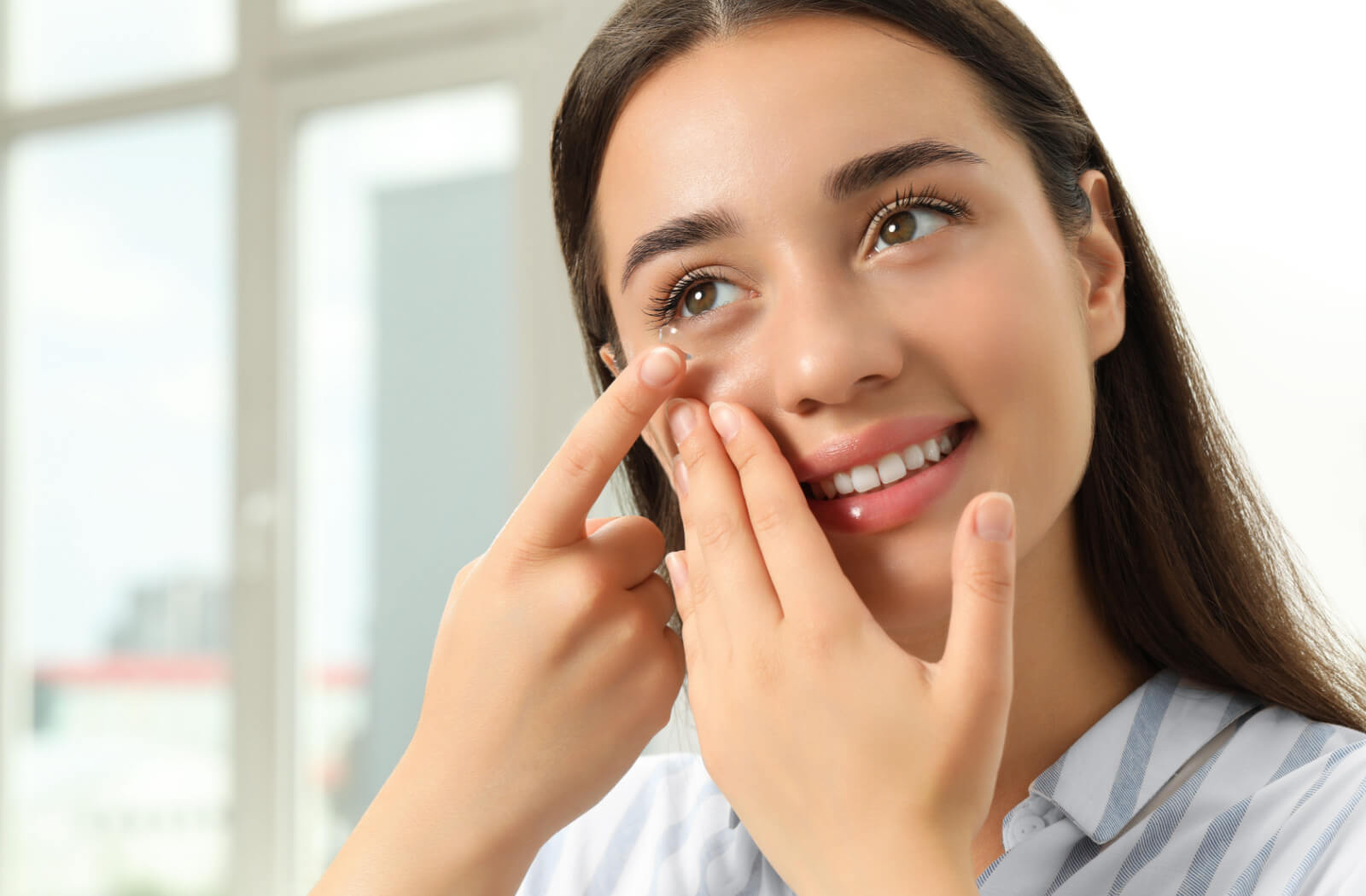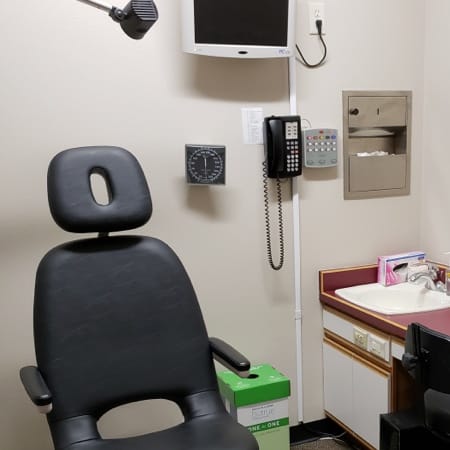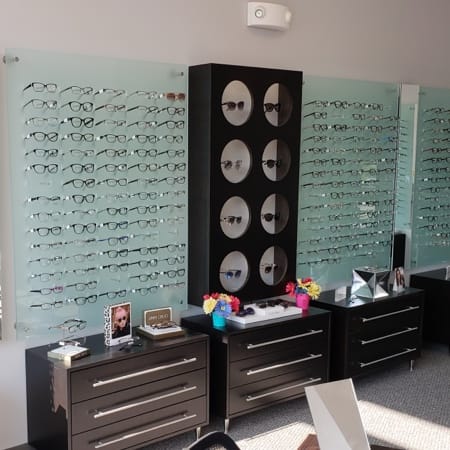
Specialized Eye Exams for Diabetic Eyes
Diabetes occurs when the body is unable to produce and distribute insulin properly. This disease affects 29 million Americans.
Diabetes can lead to complications with eyesight. Many of these problems have few symptoms during their onset and early stages, so it’s critical to have regular diabetic eye exams—call us to book your exam!



Diabetes & Your Eyes
Diabetic Retinopathy
Diabetic retinopathy is caused by damage to the blood vessels at the back of the eye when blood sugar is too high. The early stages have very few symptoms, which is why regular diabetic eye exams are so crucial.
According to the National Institutes of Health, diabetic retinopathy is the leading cause of blindness in Americans aged 20–75. Fortunately, a comprehensive dilated eye exam can catch this disease early when there is a higher chance of prevention.
Those with diabetes can be an active part in their health management. The American Optometric Association suggests these tips to help prevent or slow the development of diabetic retinopathy:
- Taking your prescribed medication
- Sticking to your diet
- Exercising regularly
- Controlling high blood pressure
- Avoiding alcohol and smoking
Diabetic Macular Edema (DME)
Half of the people with diabetic retinopathy will develop diabetic macular edema (or DME). Diabetic macular edema occurs when fluid from damaged blood vessels leaks into the macula, the central part of the retina at the back of the inner eye.
The primary visual symptom is wavy or blurred central vision. Colors may also appear washed out or dull. Treatments are available! Be sure to have regular optometrist appointments to keep DME at bay.
Glaucoma
Glaucoma is a group of eye conditions that can damage the optic nerve and compromise vision. People with diabetes are more likely to develop glaucoma than those without diabetes.
Glaucoma is often caused by high pressure inside the eye (or intraocular pressure). However, this isn’t true for every type of glaucoma. Glaucoma symptoms vary; sometimes there are no symptoms during onset, but headaches, eye pain, blurred vision, watery or red eyes, halos, vision loss may occur.
Treatments for glaucoma include eye drops, laser eye surgeries, medications, or a combination of these. Contact your optometrist to discover the ideal treatment for you.
Cataracts
Cataracts are an eye condition associated with aging but have been known to occur earlier in those with diabetes. When the lens of the eye becomes cloudy or opaque, a cataract has formed.
The American Optometric Association defines cataracts symptoms as follows:
- Blurred or hazy vision
- Reduced intensity of colors
- Increased sensitivity to glare from lights, particularly when driving at night
- Increased difficulty seeing at night
- Change in the eye’s refractive error, or eyeglass prescription
Thanks to modern medicine, cataracts are a very treatable condition. Corrective lenses can sometimes help with mild cataracts, and cataract surgery is very safe and effective.

How We Detect & Manage Diabetic Eye Conditions
We’re here to ensure your eyes are cared for, and we want to help you achieve your optimal optical health. We have several trusted technologies to help us diagnose and manage any diabetic eye conditions.
Optos
Optos offers ultra-wide retinal imaging through their optomap technology. This imaging allows our doctors to see more of your eye’s internal structure for a fuller picture of your eye health.
Fundus photography
Fundus photography allows your optometrist to take a clear digital image of the retina. It requires pupil dilation, which allows a wider view of the back of the eye.
Optical Coherence Tomography
Optical coherence tomography (OCT) is a non-invasive method of obtaining cross-sectional images of the retina. It’s used to measure the retina’s thickness and monitor eye diseases or conditions.

Diabetic Eye Care Is within Your Grasp
Eye exams are necessary for everyone but are particularly critical for those with diabetes. Include your optometrist in your diabetes management plan to keep your eyes functioning their best, and please book an appointment to help your eyes stay healthy and your vision clear.


Our Locations

Altoona
- 515-967-4095
- (515) 967-0262
- 301 Center Place SW, Suite D.
- Altoona, IA 50009
Hours
- Monday: 10:00 AM – 6:00 PM
- Tuesday: 9:00 AM – 5:00 PM
- Wednesday: 7:00 AM – 3:00 PM
- Thursday: 9:00 AM – 5:00 PM
- Friday: 9:00 AM – 3:00 PM
- Saturday: Closed
- Sunday: Closed

Johnston
- 515-270-0494
- (515) 270-6463
- 5501 NW 86th St., Suite 500
- Johnston, IA 50131
Hours
- Monday: 10:00 AM – 6:00 PM
- Tuesday: 9:00 AM – 6:00 PM
- Wednesday: 9:00 AM – 3:00 PM
- Thursday: 9:00 AM – 6:00 PM
- Friday: 9:00 AM – 3:00 PM
- Saturday: Closed
- Sunday: Closed

Services

Our Brands






See Our Google Reviews

Our Blog
What Is BlephEx, and How Can It Help Treat Dry Eye?
Dry EyeIf you have blepharitis or dry eyes, your optometrist may suggest a treatment called BlephEx to help. If you are suffering from blepharitis or dry eye syndrome, it is an eye condition that can cause red, swollen, irritated, itchy eyelids, BlephEx treatment may be a suitable option for you. While it can be uncomfortable, blepharitis […]
What Are the Best Contacts for Dry Eye?
Dry EyeThe uncomfortable symptoms experienced with dry eyes can lead to redness and irritation in the eyes. Dry eye disease is a condition that can make even the simplest daily tasks difficult. Fortunately, there are contact lenses available that can help alleviate some of these symptoms. Depending on the cause of your dry eye, your eye […]
Why Does Driving at Night Get More Difficult as You Age?
Eye HealthDriving at night can be difficult at any age, especially if you have a preexisting vision problem. Between glare, difficulty seeing in the dark, or a delayed reaction time, it can be difficult to do so safely. But why does it become more difficult as you age? As you get older, your eyesight naturally gets […]
What Is BlephEx, and How Can It Help Treat Dry Eye?

If you have blepharitis or dry eyes, your optometrist may suggest a treatment called BlephEx to help. If you are suffering from blepharitis or dry eye syndrome, it is an eye condition that can cause red, swollen, irritated, itchy eyelids, BlephEx treatment may be a suitable option for you. While it can be uncomfortable, blepharitis […]
What Are the Best Contacts for Dry Eye?

The uncomfortable symptoms experienced with dry eyes can lead to redness and irritation in the eyes. Dry eye disease is a condition that can make even the simplest daily tasks difficult. Fortunately, there are contact lenses available that can help alleviate some of these symptoms. Depending on the cause of your dry eye, your eye […]
Why Does Driving at Night Get More Difficult as You Age?

Driving at night can be difficult at any age, especially if you have a preexisting vision problem. Between glare, difficulty seeing in the dark, or a delayed reaction time, it can be difficult to do so safely. But why does it become more difficult as you age? As you get older, your eyesight naturally gets […]





